Why Your Homemade Pumpkin Spice Will Always Beat the Store-Bought Stuff
I’ve been obsessed with spices for a long, long time. I’ve seen flavor fads come and go, but pumpkin spice? It’s a classic for a reason. It’s more than a flavor; it’s the official signal that autumn has arrived. But let’s be honest—most of what you grab off the shelf is a sad, dusty imitation of the real deal. It’s often old, made with cheap ingredients, and totally unbalanced. The result is a flavor that’s flat, weak, or even a little bitter.
In this article
I remember one of the first bakeries I worked with complained that their pumpkin muffins tasted weirdly “sharp.” We went through their whole process, and everything seemed perfect. Then I took a look at their pumpkin spice, a giant tub from a generic restaurant supplier. It barely had a smell, except for a harsh, almost medicinal note. We swapped it out for a blend I had ground that morning. The difference was night and day. The muffins were suddenly warm, fragrant, and complex. That sharp note was completely gone.
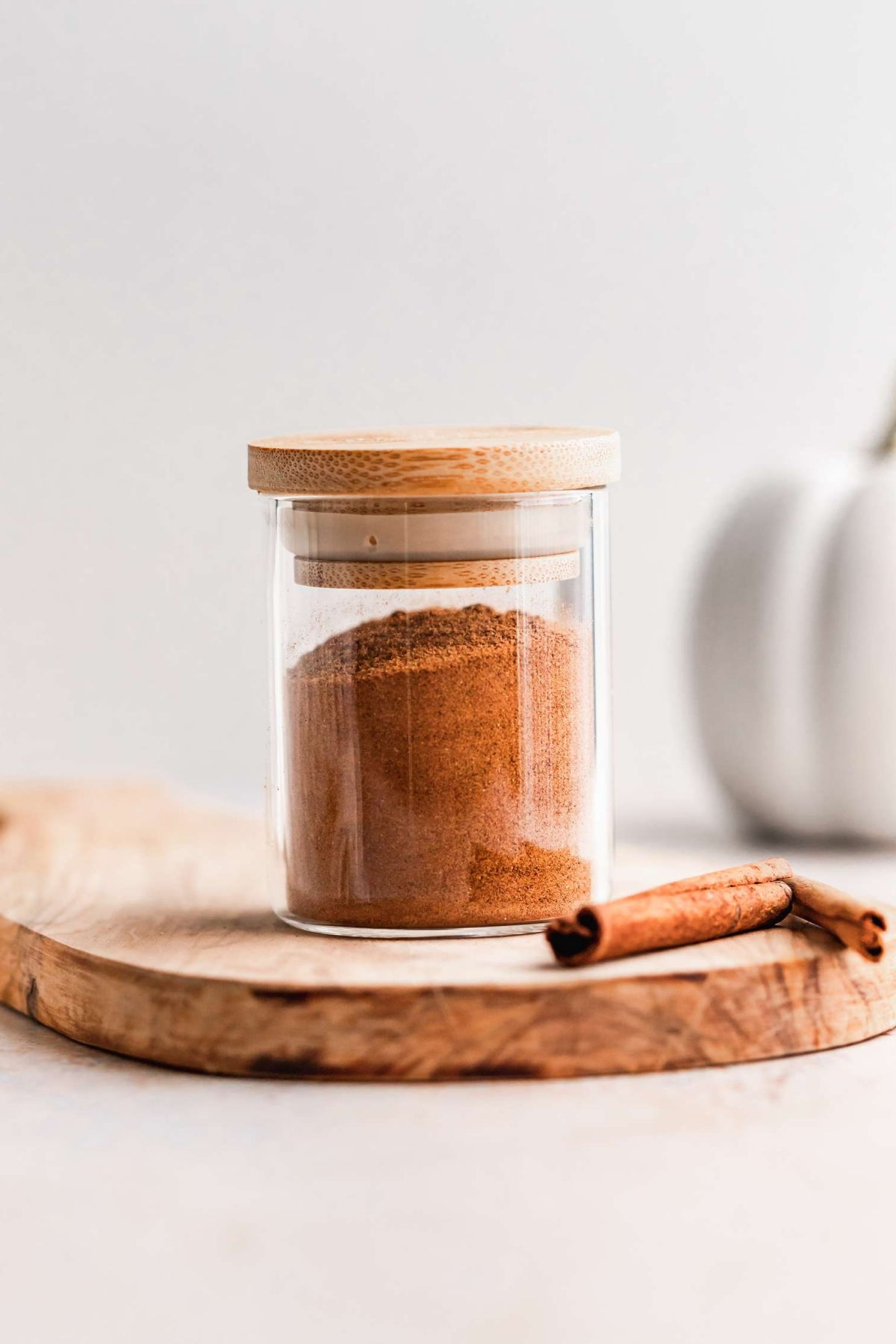
That taught me a lesson that has stuck with me forever: Your final product is only as good as your starting ingredients. And this is especially true for spices.
So, this isn’t just another recipe. It’s a complete guide to making a truly superior blend from the ground up. We’re going to cover how to pick the best spices, why grinding them fresh is a total game-changer, and the little pro techniques that make all the difference. Making your own isn’t really about saving money (though it can!). It’s about taking control and creating something that tastes incredible.
Meet Your Spice Rack’s A-Team
A great spice blend is all about teamwork. Each ingredient has a specific role, and if one is slacking, the whole thing suffers. To master pumpkin spice, you first need to get to know the five core players and how they work together.
Cinnamon: The Heart and Soul
Cinnamon is the backbone of the blend, providing that sweet, woody warmth everyone loves. But here’s something most people don’t realize: not all cinnamon is the same. Getting this right is a huge step up.
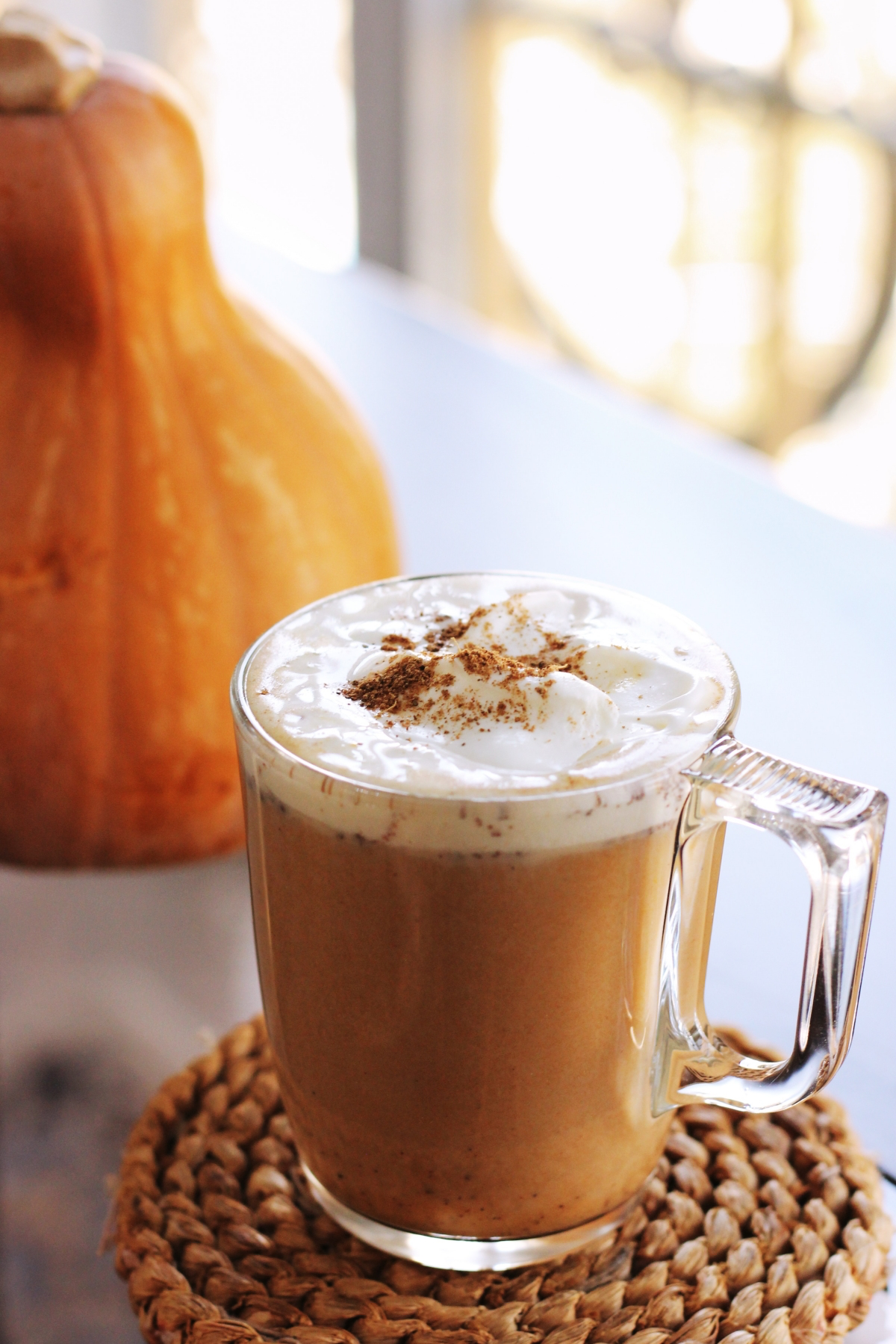
Your two main options are Cassia and Ceylon. Think of Cassia as the bold, spicy cinnamon you’re probably most familiar with. It’s what’s in most pre-ground jars here in the States. It comes in thick, hard reddish-brown sticks and has a potent, fiery flavor that stands up really well in baked goods like pumpkin bread. On the other hand, Ceylon cinnamon is often called “true cinnamon.” Its bark is pale tan, thin, and brittle, rolling into lots of delicate layers. The flavor is much more complex, floral, and subtle. I love using Ceylon for things like custards or coffee drinks where Cassia’s heat might be too much.
For a classic, robust pumpkin spice, a good quality Cassia is my go-to. It’s also usually the more budget-friendly option.
Ginger: The Bright Kick
Ground ginger is what cuts through the richness and adds a clean, zesty heat. The quality here varies a ton. You’re looking for a fine, pale-yellow powder with a strong, sharp smell. If you taste a tiny pinch, it should give you a nice warming tingle. If it tastes like cardboard, toss it—it’s old.
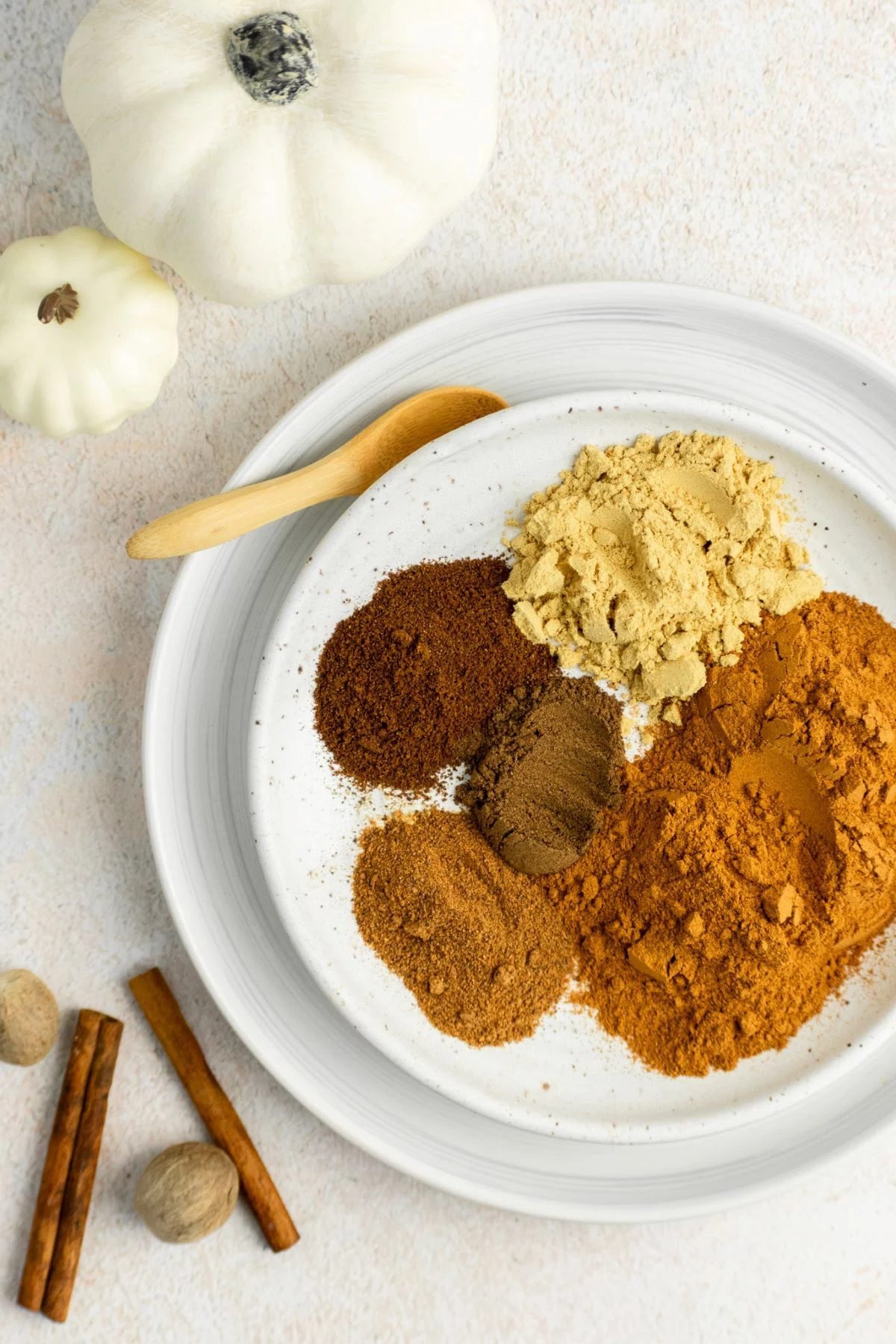
Nutmeg: The Aromatic Powerhouse
Nutmeg brings a deep, nutty sweetness and an incredible aroma. It’s so complex and fragrant, which is why I have one non-negotiable rule: always use whole nutmeg.
Seriously, if you only do ONE thing from this guide, make it this. Pre-ground nutmeg loses its magic almost instantly, leaving behind a woody, bitter dust. A whole nutmeg seed, however, will keep its amazing flavor locked inside for years. All you need is a small microplane or grater to unlock it. It’s a total game-changer.
Allspice: The Great Unifier
Despite its name, allspice is a single spice—the dried berry of a particular tree. It gets its name because its flavor tastes like a combination of cinnamon, nutmeg, and cloves. It brings a peppery warmth that acts as a bridge, connecting all the other spices and making the blend feel complete.
Cloves: The Pungent Accent
Cloves are incredibly powerful, so handle them with care. They have a strong, penetrating, almost medicinal aroma. A little goes a very, very long way. This is the #1 mistake I see in homemade and store-bought blends: too much clove. It steamrolls everything else and makes the whole mix taste harsh. Think of it as a potent accent, not a main character.
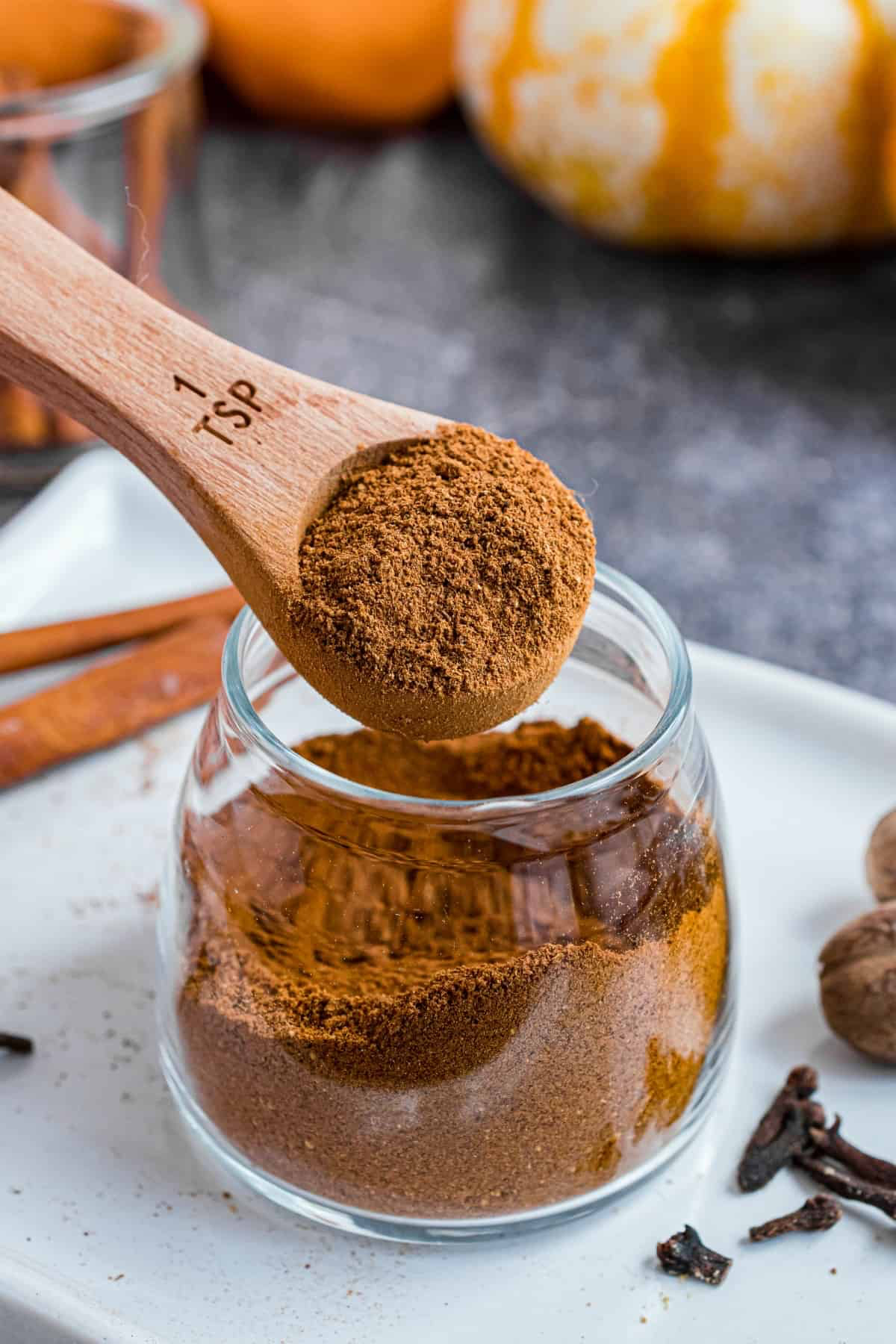
Where to Get the Good Stuff
You can have the best method in the world, but it won’t matter if your spices are junk. Skip those clear plastic jars sitting under the fluorescent lights at the grocery store. Light and air are the enemies of flavor.
Instead, look for better sources. Specialty spice shops are fantastic, as are ethnic markets (Indian and Middle Eastern groceries are often gold mines). If you’re buying online, look for reputable dealers like Penzeys or The Spice House, places that have high turnover and care about freshness.
When you buy whole spices, use your senses:
- Look: They should have deep, vibrant color and look a little oily, not dry and faded.
- Smell: The aroma should be powerful before you even grind them. If you have to stick your nose in the bag to smell anything, they’re past their prime.
- Touch: Good whole spices feel dense. A fresh clove will even release a tiny bit of oil if you press the head with your fingernail.
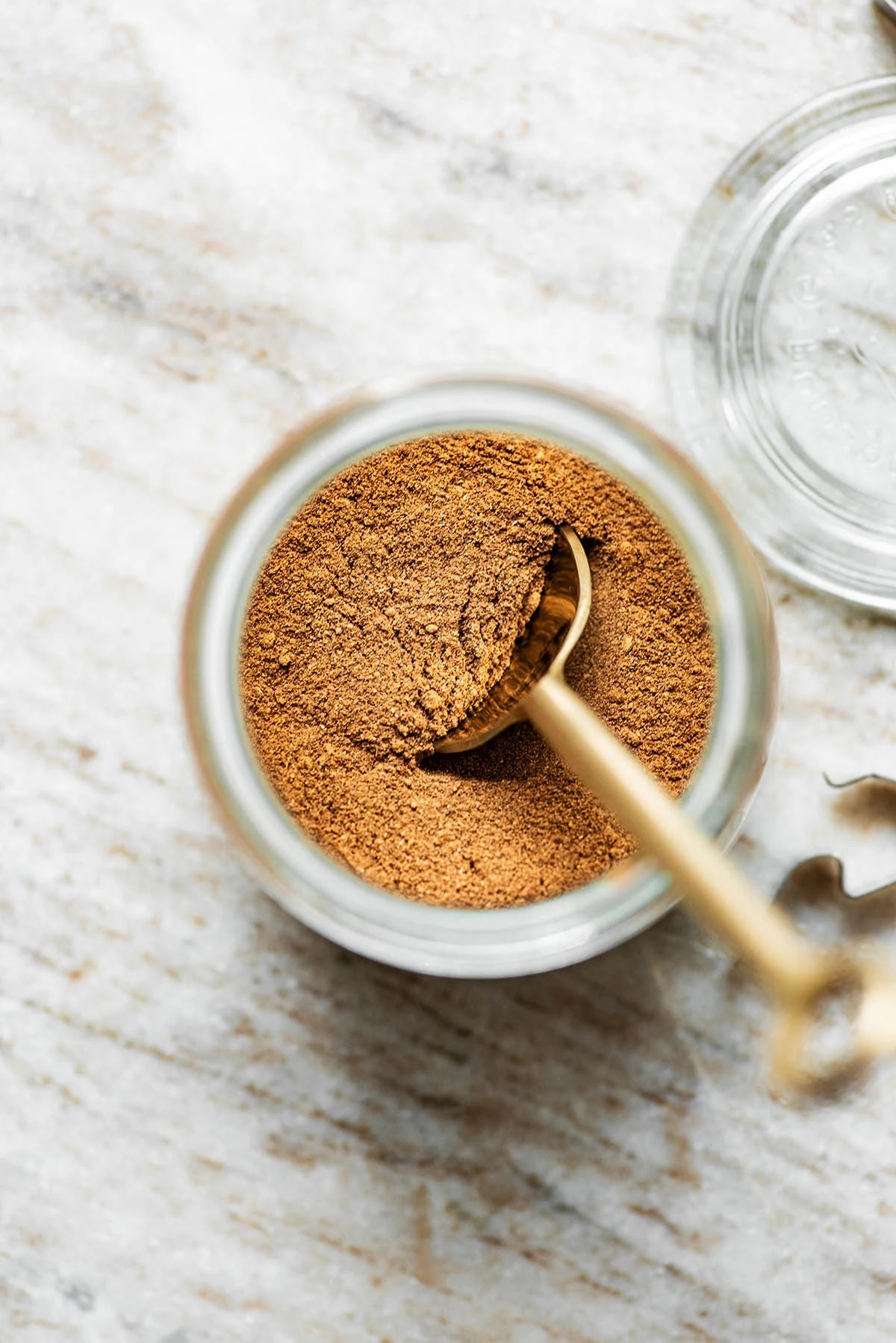
Heads up on cost: Buying a bag of whole spices might seem expensive at first, maybe $20 to $30 for everything you need. But it’s an investment. A $7 bag of whole cloves contains way more potent spice than a $4 jar of powder. Since they’re so much stronger and last longer, you end up using less and saving in the long run.
The Go-To Pumpkin Spice Recipe
In pro kitchens, everything is measured by weight for consistency, which I highly recommend if you have a small kitchen scale. But don’t worry, I’ve included volume measurements too. This recipe makes about half a cup, which should last you through a whole season of baking while staying fresh.
Ingredients:
- 30 grams Cassia cinnamon sticks (about 6-7 three-inch sticks) OR 4 tablespoons pre-ground cinnamon
- 8 grams whole dried ginger (a 1-inch piece, broken up) OR 2 teaspoons pre-ground ginger
- 8 grams whole nutmeg (about 1 ½ nuts) OR 2 teaspoons pre-ground nutmeg
- 5 grams whole allspice berries (about 2 teaspoons) OR 1 teaspoon pre-ground allspice
- 3 grams whole cloves (about 1 ½ teaspoons) OR ¾ teaspoon pre-ground cloves
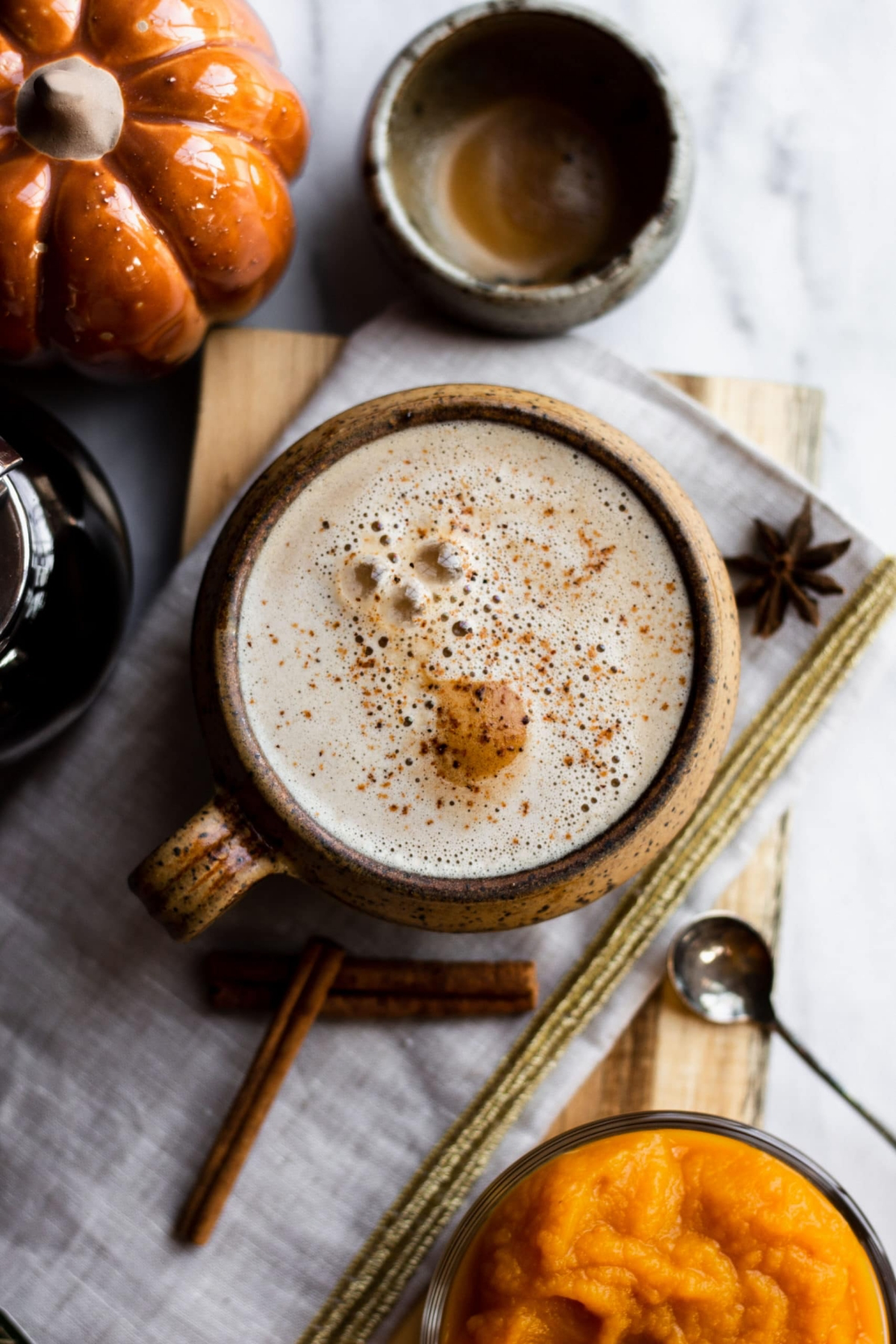
The Blending Process: A Few Pro Moves
Okay, you’ve got your spices. Now for the fun part. These steps are how you unlock their true potential.
Step 1: Toast Your Spices (Optional but Awesome)
Toasting your whole spices in a dry skillet over low heat for just 2-4 minutes wakes them up. It makes them more fragrant, deepens their flavor, and makes them easier to grind. Just keep shaking the pan so they don’t burn. As soon as your kitchen fills with an amazing, warm aroma, pull them off the heat and onto a cool plate. Trust me, it’s a step most people skip, and it makes a world of difference.
Step 2: Grind It Up
Once the spices are completely cool, it’s time to grind. A small coffee grinder dedicated to spices is the easiest tool for the job. Grind in short 3-5 second pulses, shaking the grinder in between, to keep the spices from getting hot and losing flavor.
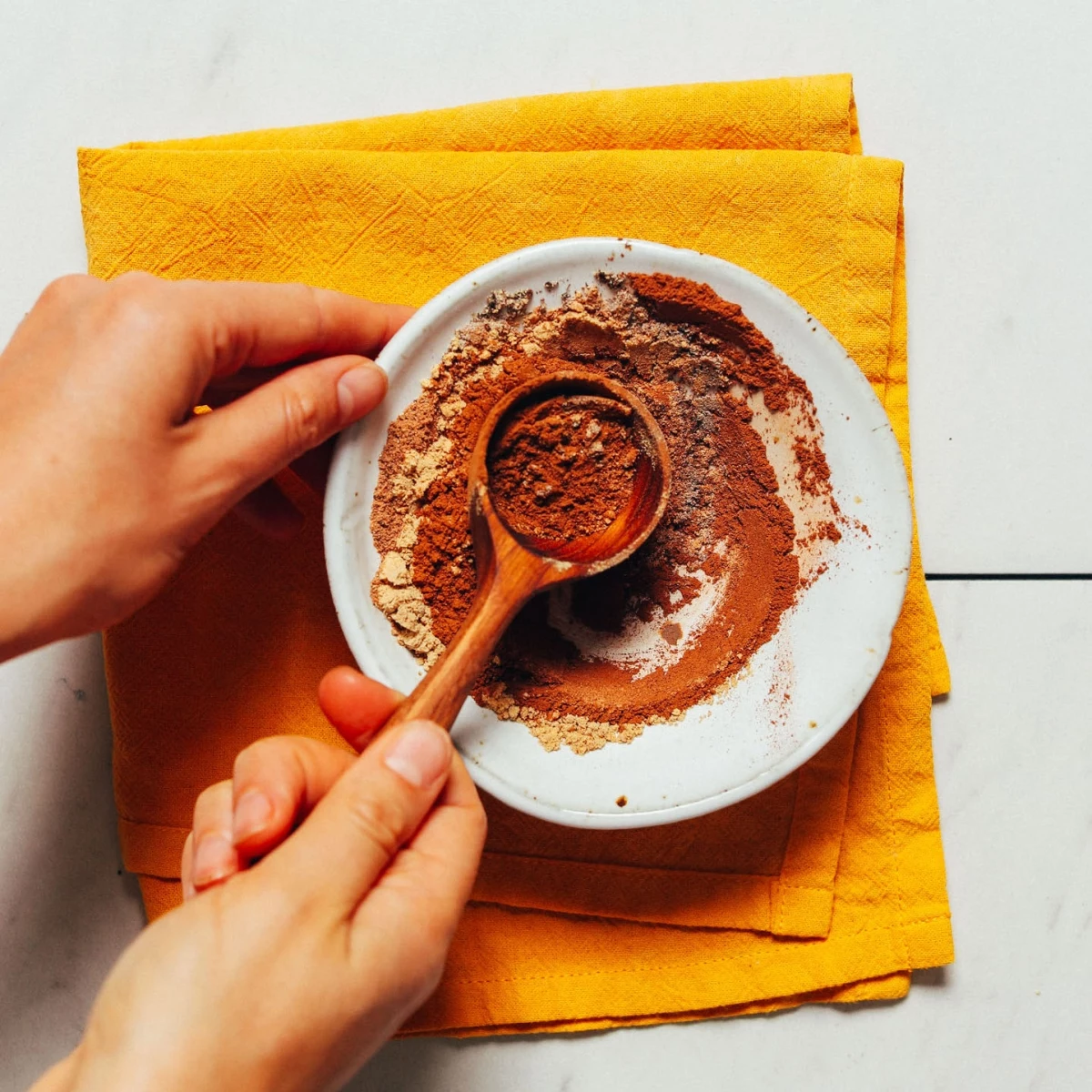
Quick Tip: Worried your next cup of coffee will taste like cloves? Of course you are. To clean your grinder, just run a tablespoon of uncooked rice or a small piece of stale bread through it. It absorbs all the residual oils and odors. Works like a charm.
If you’re feeling traditional, a mortar and pestle is a fantastic, hands-on way to do it. The texture will be a bit more rustic, which can be really nice.
Step 3: Sift for a Silky Finish
This is my secret weapon for a professional-grade blend. After grinding, pass the powder through a fine-mesh sieve. This breaks up any clumps and removes any tough, fibrous bits, leaving you with a silky, uniform powder that mixes perfectly into anything.
How to Store Your Masterpiece
You did all that work, so don’t let it go to waste! Spices hate four things: air, heat, light, and moisture. Store your blend in a small, airtight glass jar—dark amber or colored glass is best—and keep it in a cool, dark cupboard. And please, whatever you do, don’t store your spices on a rack over the stove. The heat and steam will ruin them in no time.

A freshly ground blend is at its peak for the first month and will still be great for up to six months. That’s why I recommend making smaller batches more often.
Make It Your Own: Customizing Your Blend
Once you nail the base recipe, you can start riffing on it. This is where the real creativity comes in.
- For a Baker’s Blend: When making pies or breads that bake for a long time, the flavor needs to be robust. I’ll often use the base recipe but up the ginger to 10 grams and add a 1/4 teaspoon of finely ground black pepper to make the other spices pop.
- For a Latte Blend: Here, texture is key, so I make sure the grind is extra fine. I also love to add about 1/2 teaspoon of ground cardamom. Its floral, citrusy notes are absolutely incredible with coffee.
Putting It to Good Use (Beyond Pie)
So what do you do with this amazing blend? A good rule of thumb is 1-2 teaspoons per cup of flour in a batter. But don’t stop at sweets!
Try “blooming” it by warming the spices in a little melted butter or oil for 30 seconds before adding them to a recipe. This makes the flavor incredibly rich. It’s also fantastic in savory dishes. A teaspoon in a pot of chili or black bean soup is a game-changer. Use it as a rub for roasted pork or chicken, or sprinkle it over roasted butternut squash and carrots.
I dare you to try this: make a batch and do a blind taste test against a store-bought version in your morning coffee or oatmeal. You’ll be amazed at the difference. Once you go fresh, you’ll never go back to that dusty jar again.
Inspirational Gallery
Blade Grinder: Fast and affordable, a coffee grinder like the classic Krups F203 can easily powder your whole spices. The downside is a less uniform grind and a bit of heat generation.
Burr Grinder: For the true aficionado, a burr grinder (like those from Cuisinart or Baratza) provides a consistent, even grind without overheating the spices, preserving their delicate aromatic oils. Ideal for making larger batches with superior flavor.
The first commercial “Pumpkin Pie Spice” blend was introduced by McCormick & Company all the way back in 1934, standardizing a flavor profile that home bakers had been approximating for generations.
Think beyond the pie! Your fresh blend is incredibly versatile. Try it in new ways:
- Toss with sweet potatoes or butternut squash before roasting.
- Whisk a pinch into your weekend pancake or waffle batter.
- Stir a quarter teaspoon into a pot of chili for a surprising depth and warmth.
- Mix with softened butter and a touch of maple syrup to create a phenomenal compound butter for toast or cornbread.
The enemy of your fresh blend is threefold: light, heat, and air. To protect those precious volatile oils you worked so hard to preserve, store your mix in a small, airtight container. Opaque ceramic or dark glass jars, like the classic amber Boston rounds, are perfect. Keep it in a cool, dark cupboard, not on a spice rack next to the stove.
How much homemade spice should I use to replace a store-bought version in a recipe?
Start with about 25% less than the recipe calls for. Because your homemade blend is so much more potent and aromatic, a little goes a long way. You can always add more to taste, but it’s much harder to correct an over-spiced dish. For a standard pumpkin pie, 1.5 to 2 teaspoons of a fresh blend is often the perfect amount.
- A richer, more complex aroma that store-bought versions can’t match.
- A warm, lingering flavor without the harsh or bitter notes.
- A professional touch that elevates your baking.
The secret? Add an unexpected player. For a truly memorable blend, introduce a tiny pinch of finely ground black pepper or the seeds from a single green cardamom pod. This small addition adds a sophisticated, almost floral brightness that cuts through the sweetness and deepens the other flavors.
The moment you start grinding whole spices, the air in your kitchen transforms. It’s a multi-sensory experience: the low whir of the grinder, the sweet perfume of cassia, the sharp tang of ginger, and the warm, earthy notes of nutmeg all blooming at once. This is the true scent of autumn, captured not in a dusty jar, but in a vibrant, aromatic cloud of your own making.
Did you know that whole spices can retain their potency for up to 4 years, while pre-ground spices often lose most of their flavor within 6 to 12 months?
This dramatic difference is why buying whole spices from a reputable source like Penzey’s Spices or The Spice House is a true investment in flavor. You’re not just buying an ingredient; you’re buying potential. Grinding only what you need ensures every dish gets the freshest, most vibrant taste possible.
A jar of your custom pumpkin spice blend makes a thoughtful and impressive gift. Elevate the presentation by packaging it in a classic glass container, like a small Weck or Le Parfait jar. For a polished finishing touch, design and print custom labels on sticker paper—or find beautiful, ready-made designs from sellers on Etsy. It turns a simple spice mix into a beautiful, personal present.
If you choose to gently toast your whole spices before grinding to deepen their flavor, be careful not to overdo it. Just 2-3 minutes in a dry pan over medium-low heat is plenty. If they start to smoke or smell acrid, they’ve gone too far. Burnt spices will introduce a distinct bitterness to your final blend that no amount of cinnamon or sugar can hide.










